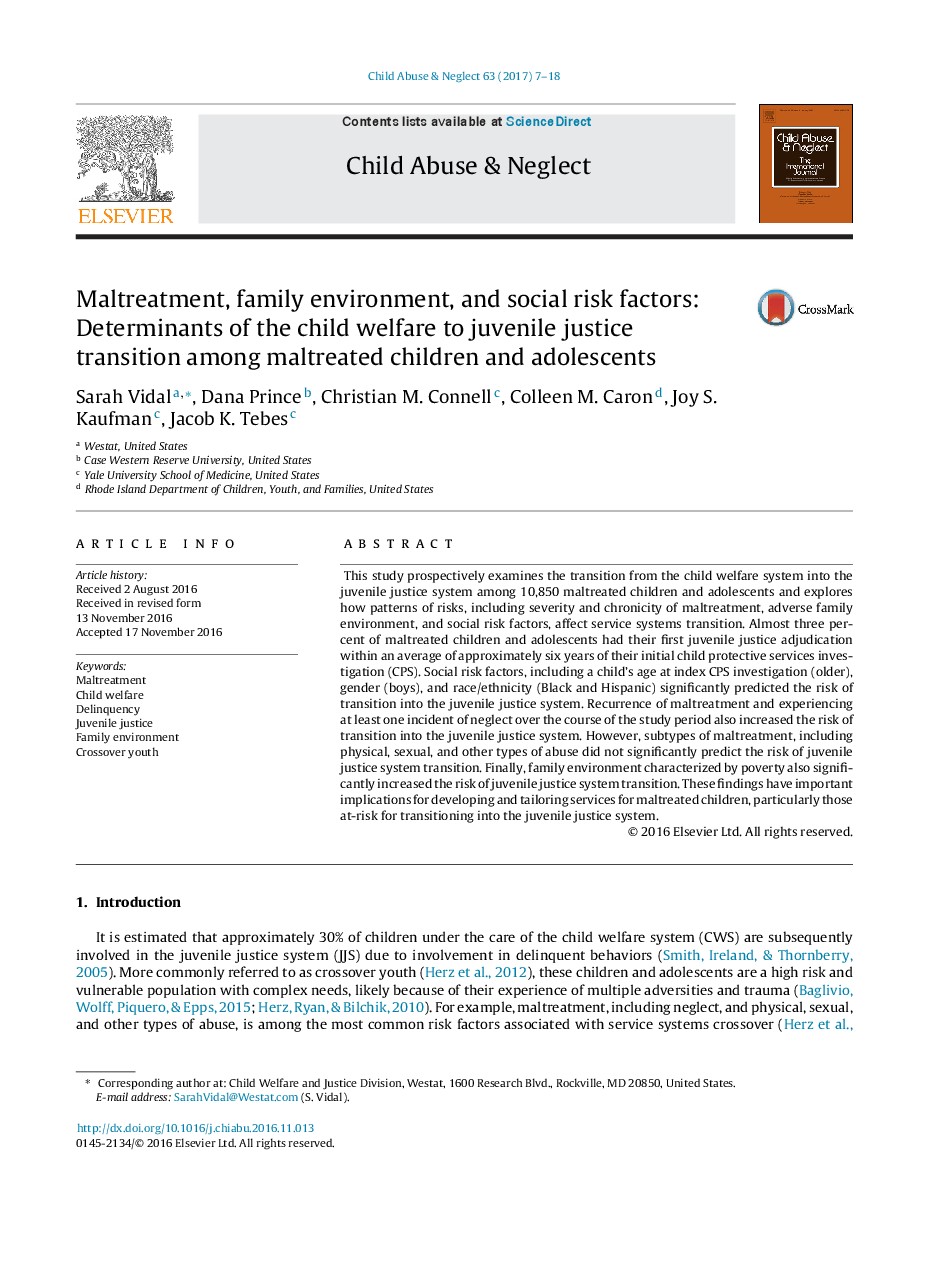ترجمه فارسی عنوان مقاله
بدرفتاری، محیط خانوادگی و عوامل خطر اجتماعی: عوامل موثر بر رفاه کودک برای انتقال عدالت نوجوانان به کودکان و نوجوانان متخلف
عنوان انگلیسی
Maltreatment, family environment, and social risk factors: Determinants of the child welfare to juvenile justice transition among maltreated children and adolescents
| کد مقاله | سال انتشار | تعداد صفحات مقاله انگلیسی |
|---|---|---|
| 121815 | 2017 | 12 صفحه PDF |
منبع

Publisher : Elsevier - Science Direct (الزویر - ساینس دایرکت)
Journal : Child Abuse & Neglect, Volume 63, January 2017, Pages 7-18
ترجمه کلمات کلیدی
بدرفتاری رفاه کودکان، بزهکاری عدالت برای نوجوانان، محیط خانوادگی، جوانان متقاطع،
کلمات کلیدی انگلیسی
Maltreatment; Child welfare; Delinquency; Juvenile justice; Family environment; Crossover youth;

